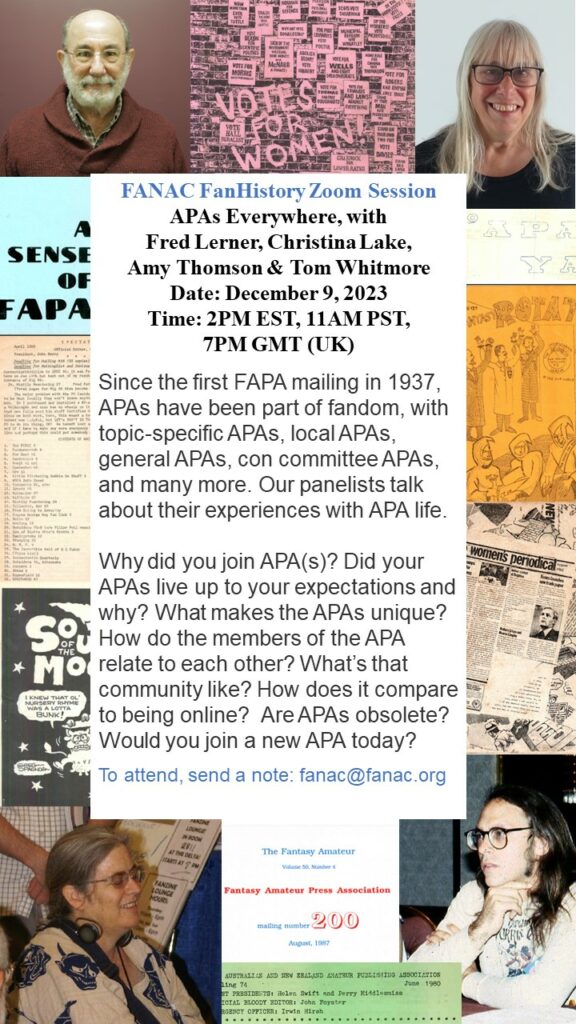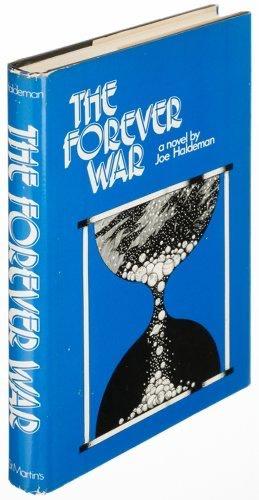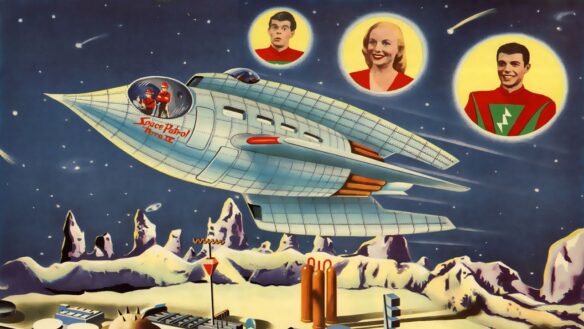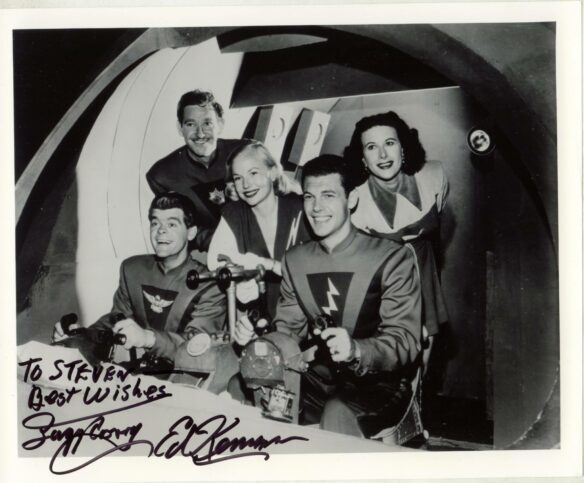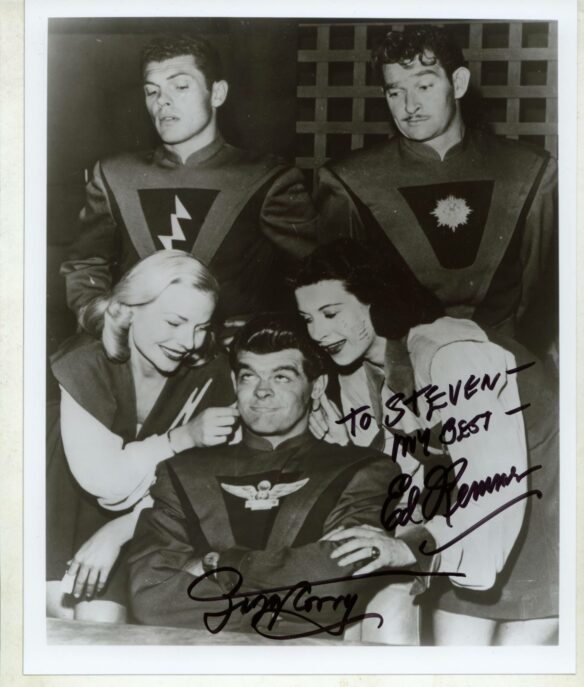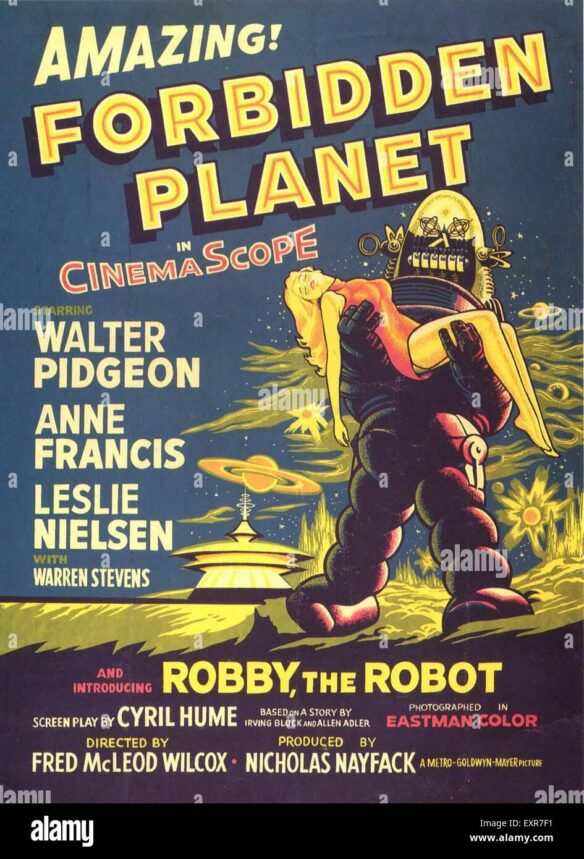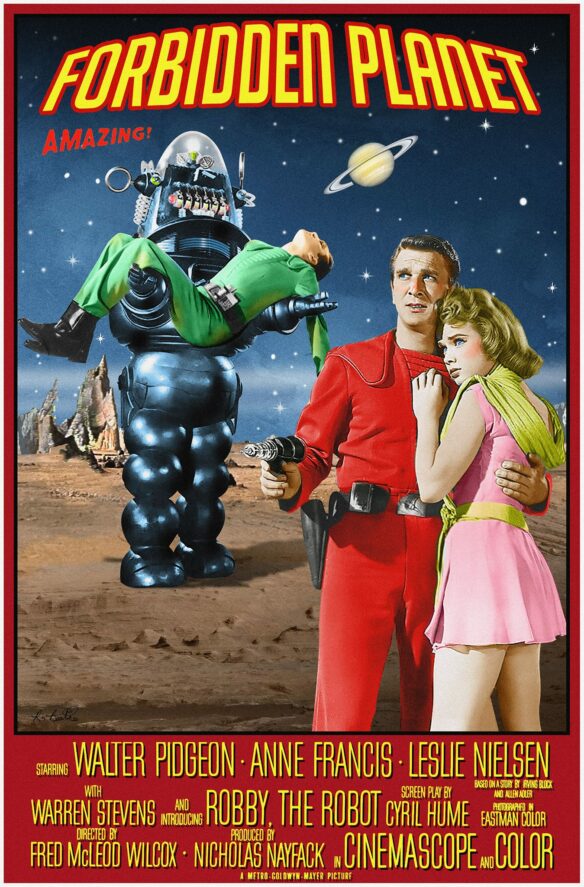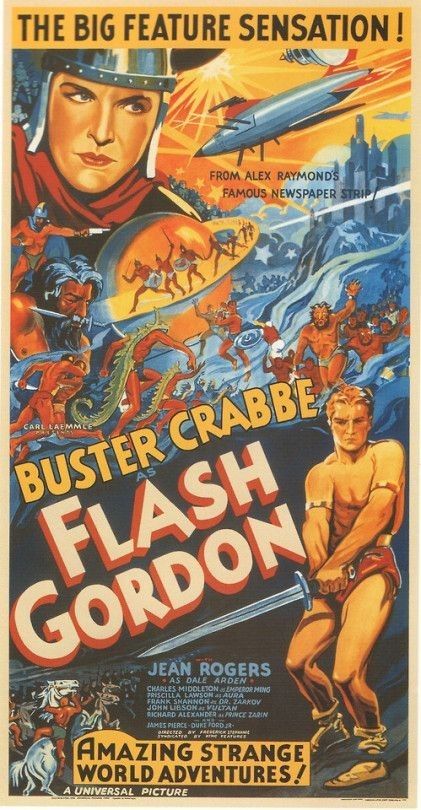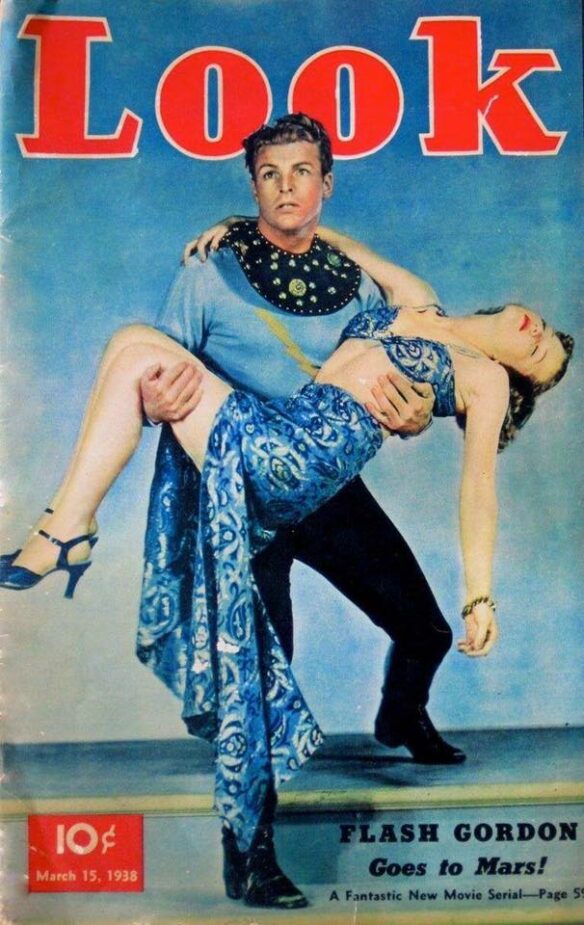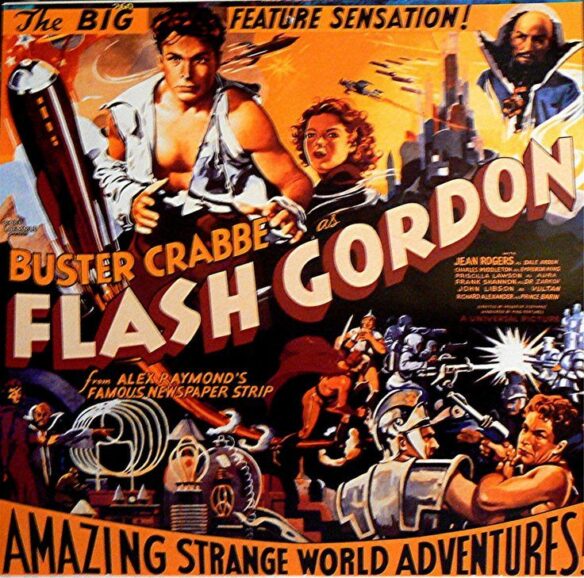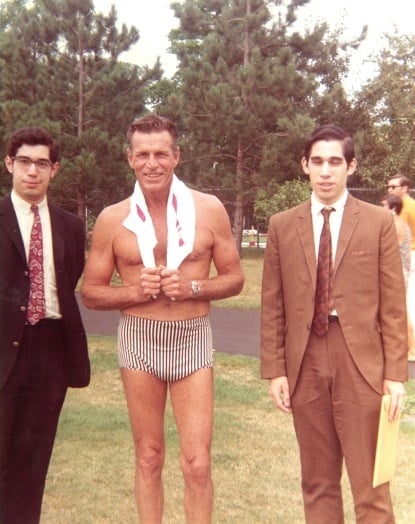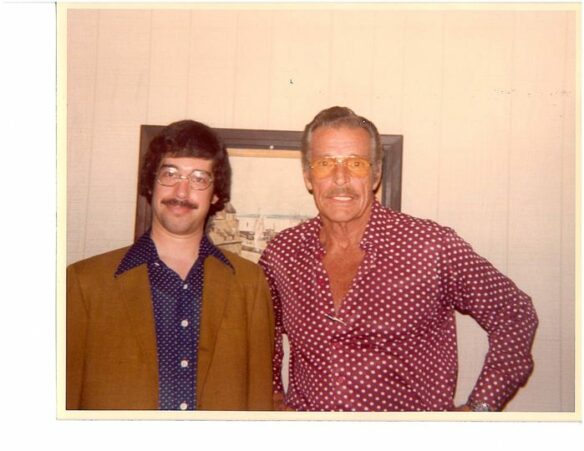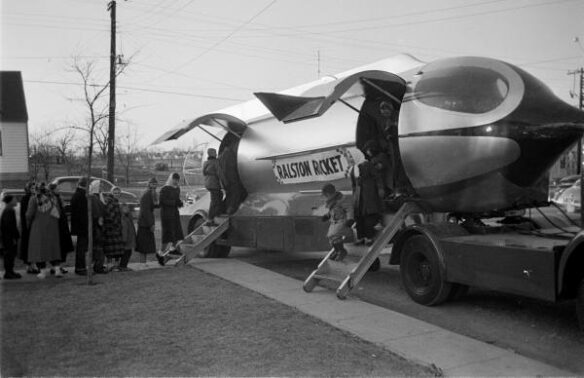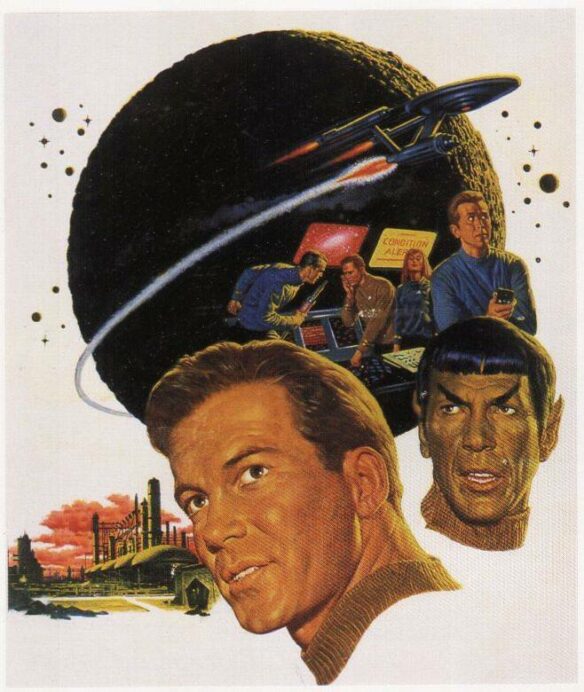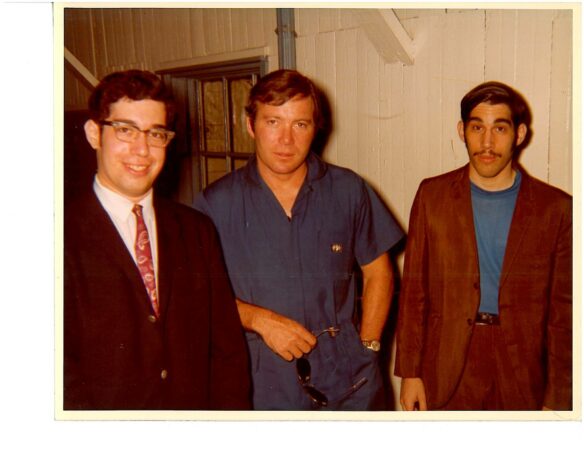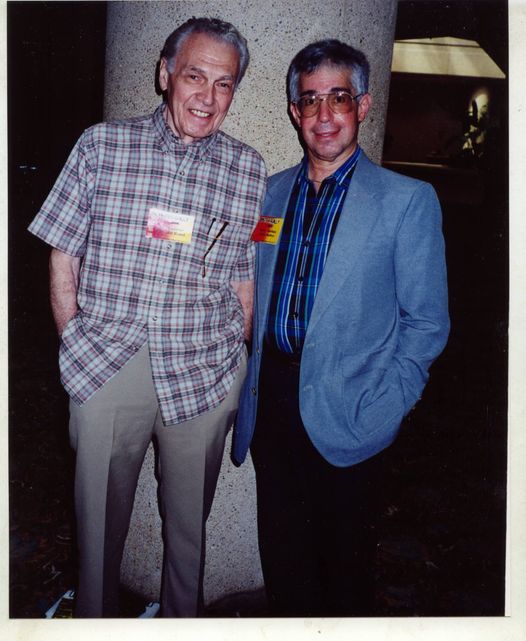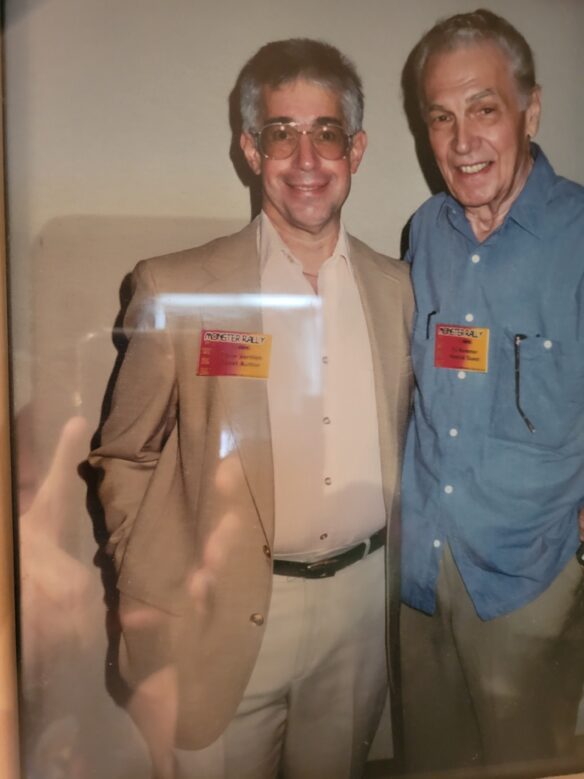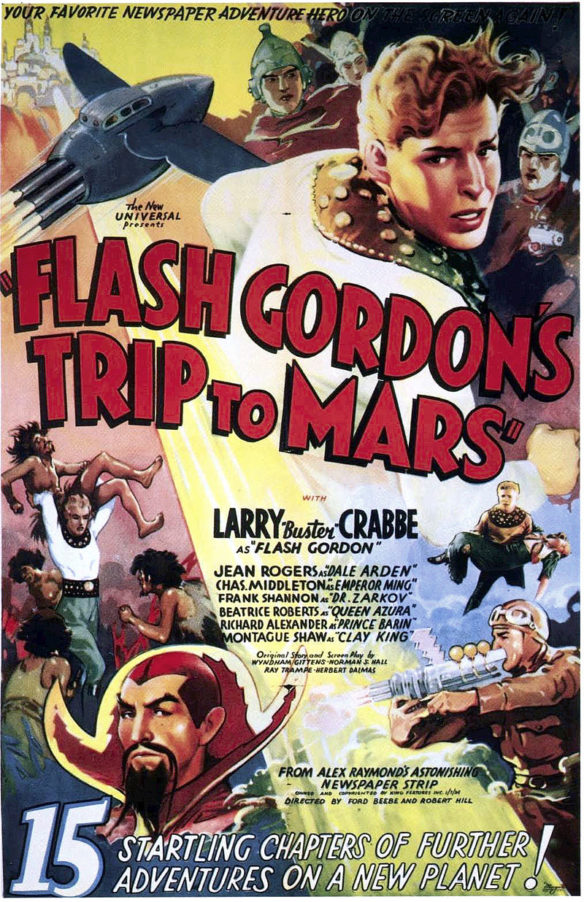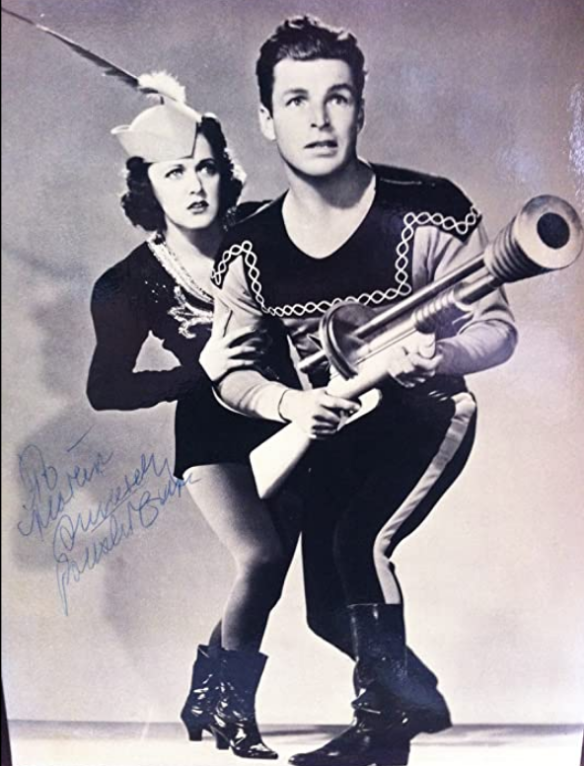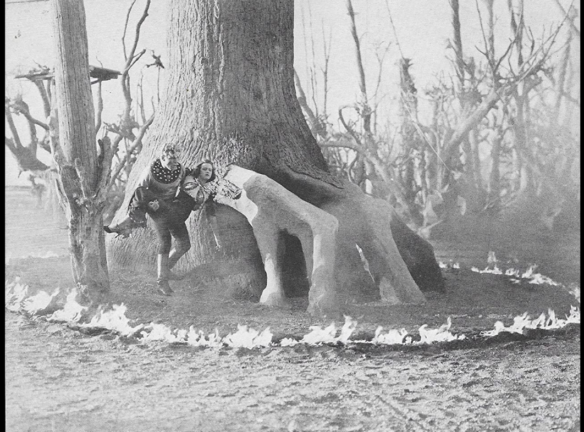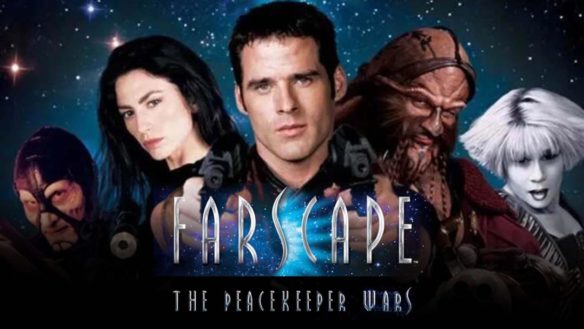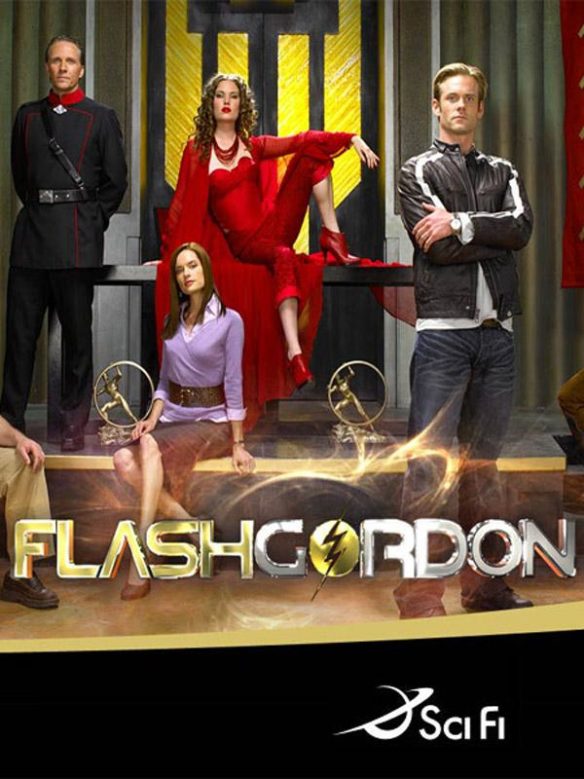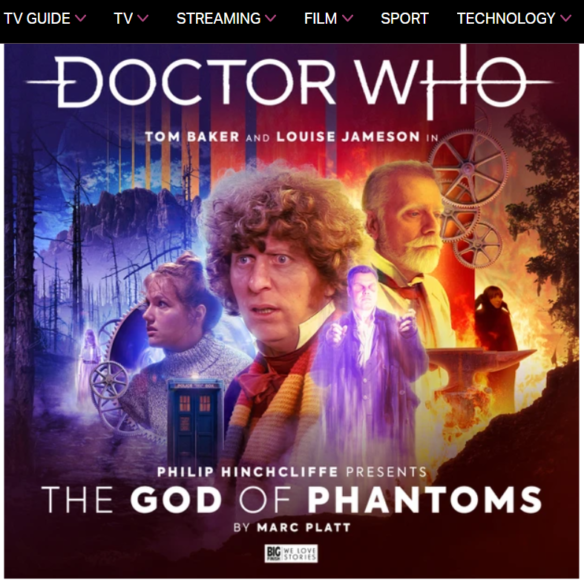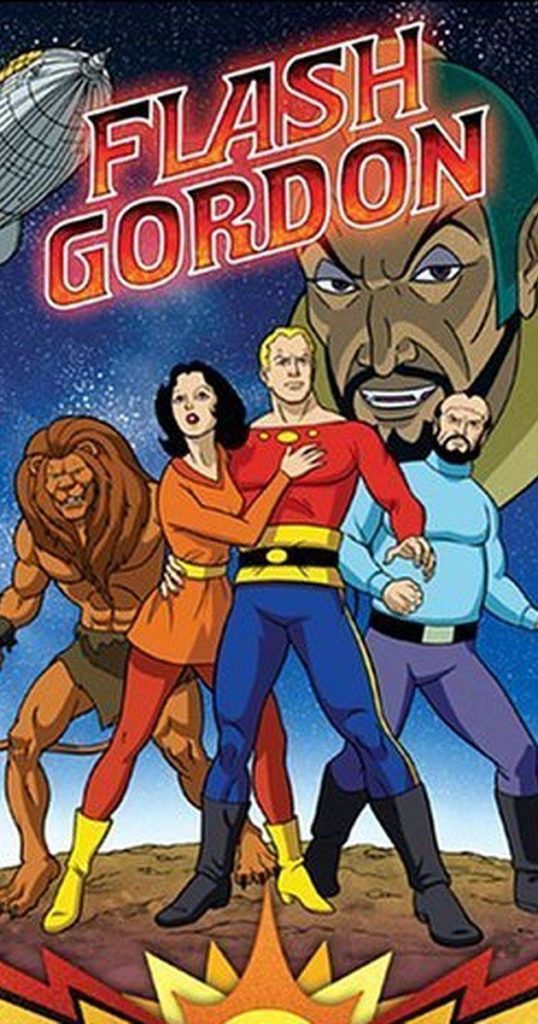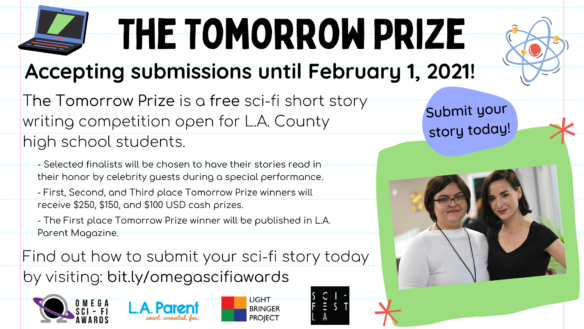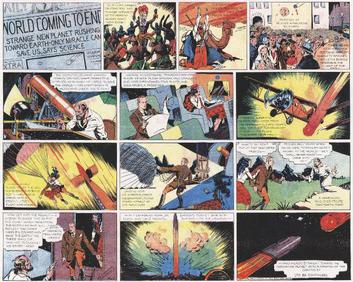(1) BRAND NEW AUDIO FEATURE. Daniel Dern sent a music video playlist to accompany his Pixel Scroll title today.
“Lullabye of Broadway” (from 42nd Street)
“Birdland”
- Weather Report – “Birdland” (instrumental)
- The Manhattan Transfer – “Birdland” – Vocalese Live (1986)
Optional play(list)
- Sarah Vaughan – “Lullaby of Birdland”
- Ella Fitzgerald — “Lullaby of Birdland”
- Mel Torme — “Lullaby of Birdland”
(2) NEW VOICE CHIMES IN. There’s a slight changing of the guard at the “Worldbuilding for Masochists” podcast. Marshall Ryan Maresca and Cass Morris will now be joined by Natania Barron, who’s taking over from Rowenna Miller.
Cass Morris made the announcement on her Scribendi newsletter.
There’s been some change and excitement on the Worldbuilding for Masochists podcast! Rowenna Miller, who’s been a co-host since the beginning, is stepping back for reasons of Life And Everything. She’s not disappearing forever; she’s still working on the anthology with us, and we’ll certainly pull her in to be a guest in the future. Marshall and I will miss her, but we’re also very excited to welcome Natania Barron as our new co-host!
Natania is a fantastic person who I first met through, if I’m remembering it correctly, yelling about corsets on Twitter-that-was. She had the popular #ThreadTalk feature there, showcasing her expertise as a fashion historian. She’s also a medievalist and Arthuriana-ist! I got to hang out with her at ConCarolinas a couple of years ago, and she’s as delightful in real life as she is online. Listeners can get to know her a bit in this week’s episode, Passing the Torch.
(3) THE RUNAWAY BRIDE IS RUNAWAY WINNER. When Radio Times finishes counting the votes, “David Tennant bests Matt Smith in Doctor Who Christmas episode poll”. And Cat Eldridge says, “Why we should be in the least bit surprised that David Tennant bested Matt Smith in this particular poll?” He’s been the best loved Doctor of the modern era in almost every poll taken, if not all of the them.
… The first round, in which they were split by Doctor (with the Tenth Doctor getting two separate polls due to the vast number of his specials) saw The Runaway Bride, The End of Time Part 2, A Christmas Carol, The Husbands of River Song and Eve of the Daleks all sail through.
Meanwhile, in the second round, it was just The Runaway Bride and A Christmas Carol which made it through, with the former going on to take the crown, with 53.4 per cent of the final vote, against the latter’s 46.6 per cent….
(4) MAIL FROM THE NORTH POLE. [Item by Steven French.] This is well known but it’s still lovely to see his drawings: “J.R.R. Tolkien Is Our Favorite Father Christmas” at Atlas Obscura.
On December 24, 1920, J.R.R. Tolkien sat down in his study and wrote a letter to his three-year-old son, John, who had recently asked about Father Christmas. In spidery handwriting, in red ink, Tolkien replied as Father Christmas (the English folkloric figure now widely equated with Santa Claus), addressed from “Christmas House, North Pole.”
The accompanying picture that he drew is charmingly Tolkien-esque. A red-coated figure with a long white beard and a rosy red nose walks through the snow. His dome-shaped house glows from a wintery hillside, at the end of a staircase lit with lanterns.
For the next 23 years, every Christmas Eve, Tolkien wrote a letter to his four children from Father Christmas. What began as short, informative letters—“I am just now off to Oxford with a bundle of toys”—evolved into longer tales about life at the North Pole. The 1932 letter begins, “Dear Children, There is alot to tell you. First of all a Merry Christmas! But there have been lots of adventures you will want to hear about. It all began with the funny noises underground … ”
(5) A MOVING TRIBUTE. “Lord Of The Rings Lego Rivendell Set Comes to Life in Epic Stop-Motion Video” at Nerdist.
Earlier in the year, Nerdist went on its own epic journey and built LEGO’s Rivendell set. As expected, the results were astounding. The build features all the hallmarks of The Lord of the Rings movies’ elven sanctuary, including the bridge and gazebo where Arwen and Aragorn share a moonlit moment and the Council Ring where our favorite fellowship forms. Not to mention, it comes with 15 Minifigures. In short, it gives you everything you need to recreate sequences from the beloved franchise in LEGO form. And in a gorgeous stop motion video, shared by Warner Bros. itself, DigitalWizardsStudios did exactly that. Watch as LEGO’s The Lord of the Rings Rivendell set transforms into a stop-motion animation masterpiece that reimagines all our favorite cinematic scenes….
(6) OCTOTHORPE. Episode 99 of Octothorpe is “Keep Sending Ops Until They Fix It”.
Merry Christmas! The three of us are scattered to the four winds this week, so we’ve recorded something to tide everyone over until 2024. We play “If I Ran the Zoo…Con”, a game which models conrunning. Will we succeed in running a great convention? Or will our decisions have dire consequences? Listen here, and we’ll see you next year!
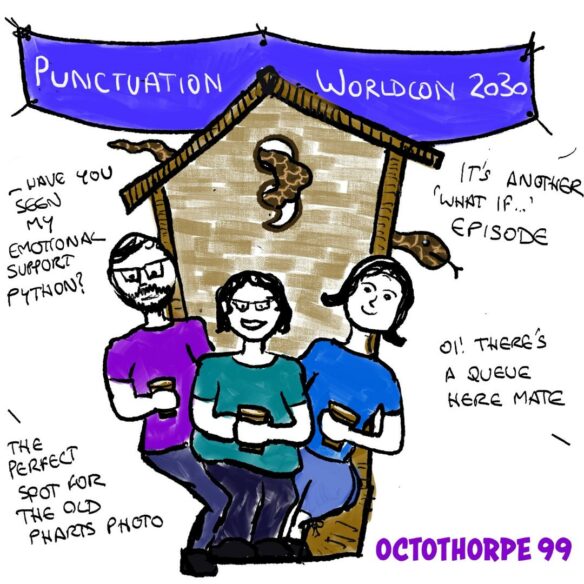
(7) HARLAN’S 4-HOUR CAREER AT DISNEY. Part of Lifehacker’s article “Is Disney Actually Woke, or Is It All a Conspiracy Theory?” detours to pull in this story:
Truth: Harlan Ellison was fired from Disney for imitating Disney characters having sex
Irascible science fiction writer Harlan Ellison once worked for Disney, and according to an autobiographical essay in his 1982 book Stalking the Nightmare, Ellison’s tenure ended after one day at lunch with his co-workers when he jokingly suggested Disney should make a porn movie starring his well-known creations. He then acted out the noises various Disney characters might make in said porn movie. What Ellison didn’t realize was that Roy Disney was at the next table and overheard the whole routine. Roy apparently didn’t find it amusing, and Ellison was terminated.
Yes, it’s true. And Harlan tells the story in full, complete with dialogue and sound effects, in “The 3 Most Important Things in Life” at the Internet Archive.
(8) IN CASE YOU DIDN’T KNOW. [Item by Daniel Dern.] There’s only a few interesting (to me) bits in “10 Things You Didn’t Know About Flash Gordon (1980)” but watching this is enough to add a re-re-watch to my mental list (particularly now that I’m somewhat more attuned to the sound of Queen). Two particular Things to report:
- George Lucas originally wanted to make the movie, but that didn’t happen. So instead, he went on to create his own space opera. (The one with the Force and lightsabers etc.)
- Music almost done by Pink Floyd rather than Queen. That would have been very different!
Also, there’s several cast overlaps between this movie and Bond movies.
(9) DR. JAMES HOSEK (1964-2023). The SFWA Blog paid tribute to Jim Hosek, who died December 3. “In Memoriam: Jim Hosek”.
Dr. James Hosek (13 October 1964 – 03 December 2023) known to many in the community as Jim, was a writer of veterinary mystery and philosophical humor. Especially proud of his role as Nebula Award Commissioner, his own story “Total Loss” was published in Analog Science Fiction and Fact magazine. He wrote the Dr. At stories about a house call veterinarian who lands in the middle of mysteries, and the novel, A Really Good Day, a lighthearted and humorous story about an underdog golfer whose story of an incredible single day on the course finds an unexpectedly happy ending….
(10) TODAY’S BIRTHDAY.
[Written by Cat Eldridge.]
Born December 21, 1937 — Jane Fonda, 86. I know that I saw Barbarella, her seventeenth film, on a large screen but it would been years after it came out so this was one of the arts cinemas, and I’m guessing it was in Seattle. It’s a very impressive looking film though I’m not sure I can say much for the script.
Roger Vadim, the director had attempted to cast other actresses to wit Brigitte Bardot, Virna Lisi and Sophia Loren for this role before choosing Fonda, his wife. I wonder what he’d have done if she turned him down?
So what else for genre roles? Well she’s Countess Frédérique de Metzengerstein in the “Metzengerstein” story of the three stories in Histoires extraordinaires directed by Roger Vadim, Louis Malle and Federico Fellini. It was dubbed in English as Spirits of The Dead.
Next up is Klute which I know as a “neo-noir psychological thriller” isn’t even an associational mystery but I think her role in it is fascinating so I’m including it here.
The Blue Bird in which she played Night being a children’s fantasy is most definitely in our wheelhouse. It was the fifth screen adaptation of the play, following two silent films, the studio’s 1940 version starring Shirley Temple, and a 1970 animated feature.
This was Twentieth Century Fox’s attempt forty-seven years ago at recapturing the magic of the highly successful Temple version. It was a disaster. Interesting note: Elizabeth Taylor who had a lead role here approached David Bowie to star in the film but he turned it down.
In Elena and the Secret of Avalor, she has her first animated voicing gig as Shurkiki. Next in Luck, she’s voicing Babe, a female dragon who is the really cheerful Good Luck CEO. Finally, she voices Grandmamah, the Warrior Queen of the Seven Seas in the Ruby Gillman, Teenage Kraken film.

(11) I’VE GOT A SECRET. [Item by Andrew (not Werdna).] Critic Peter C. Baker says “Joanne McNeil’s ‘Wrong Way’ Takes the Shine Off the Self-Driving Car” in The New Yorker.
For sci-fi writers, driverless cars have long been a supremely efficient shorthand for dramatic change, an effective way of immediately grounding a story in the future, where things are different. The Czech American physician and author Miles J. Breuer’s 1930 novel, “Paradise and Iron,” is set largely on an island where most technology works without human input. The narrator gets a “queer feeling at the complete absence of wheel and gear-shift levers,” or any person operating them. Sci-fi storytellers have been leveraging that queer feeling ever since, often-in the case of movies-with help from carmakers. Audi helped design the autonomous cars in “I, Robot” (2004) and “Ender’s Game” (2013), which concretize the films’ visions of the future.. But what happens when a long-standing symbol of the future arrives in reality? How do you write about it?
Joanne McNeil’s début novel, “Wrong Way,” is a useful literary bellwether of this shift: a novel about the self-driving-car business that feels less like a vision of the future than a dispatch from the present. The story is told from the perspective of Teresa, a forty-eight-year-old Massachusetts woman who responds to a vague “Drivers Wanted” Craigslist ad posted by a recruiter on behalf of a Google-ish tech conglomerate called AllOver. At her orientation, she’s shown a video advertising an AllOver driverless electric taxi called the CR. But each CR, it turns out, has a human backup operator stashed inside, hidden from passengers, watching the road on a video screen. Teresa is a safety driver, of sorts, but a secret one: her passengers, she’s told, won’t know she’s there….
(12) TARNATION. At The Mary Sue, Jack Doyle sure has a funny way of celebrating that “’La Brea’ Is Returning To Wreak Prehistoric Havoc on Los Angeles”.
….What I want is to go out into my backyard on Christmas morning, where I have left the figgy pudding from the night before to congeal in a kiddie pool. I will then strip naked in the cool December air, and submerge myself entirely in the figgy pudding. And I will lie there in wait, for thousands—perhaps millions—of years. At least until a concerned relative comes out to check on me. Then I will leap out from the figgy pudding, roaring like a saurian of old, and pounce upon my in-laws who made the foolish decision of attempting to look out on the backyard Christmas lights in my domain. Dinosaurs are not merciful, and neither am I.
That is why—more than anything in the world—I want La Brea season 3 to arrive as soon as possible. I wish to learn the hunting skills of the dinosaurs of old. I will wait. I am many things, but above all else … I am patient….
(13) WARHAMMER COMING TO PRIME. T3 reports “Amazon Prime Video is new home to the most exciting sci-fi TV and movie franchise out there” – streaming content based on the Warhammer 40,000 tabletop games by Games Workshop.
…Games Workshop has confirmed that the contract has been signed and Warhammer 40K movies and TV shows are planned for Amazon Prime Video….
…There’s certainly a wealth of stories that can be told within such a massively detailed franchise. Warhammer 40,000 was first created as a tabletop wargame offshoot of the fantasy equivalent Warhammer in 1987. Since then, it has been expanded upon greatly, with hundreds of novels, video games, and rulebook revisions now available.
What made it unique at the time is that it combined the fantasy theme of Warhammer including orcs, goblins, and necromancy, with the high tech, spacefaring tropes of sci-fi. Oh and guns… many, many guns….
…It will certainly make for a visual feast when it finally does make it onto our screens via Amazon. However, don’t expect it anytime soon – Games Workshop warns that it could take years yet: “TV and Film production is a mammoth undertaking. It’s not unusual for projects to take two to three years from this point before something arrives on screen,” it said….
(14) BURIED ALIVE. NPR’s “The Indicator from Planet Money” feature tells “What Coyote vs. Acme reveals about Hollywood economics”. Audio – no transcript.
The movie Coyote vs. Acme was set to release this summer featuring characters from the iconic Looney Tunes cartoons. The studio behind the film, Warner Bros. Pictures, had some other ideas. Instead of releasing the completed film, the studio canceled Coyote vs. Acme, with no intention of ever releasing it.
Today on the show, we explain the Hollywood economics behind why Warner Bros. Discovery might not want to release movies that its own studio spent years putting together.

[Thanks to John King Tarpinian, Chris Barkley, Daniel Dern, Andrew (not Werdna), Cat Eldridge, SF Concatenation’s Jonathan Cowie, Mike Kennedy, and Andrew Porter for some of these stories. Title credit belongs to File 770 contributing editor of the day Daniel Dern.]

